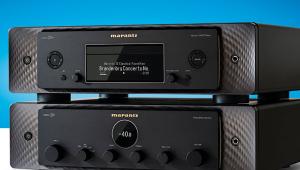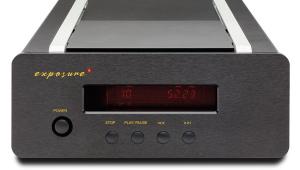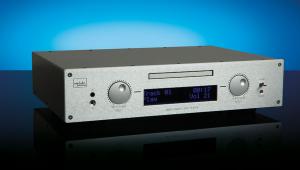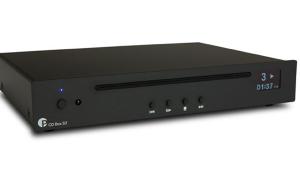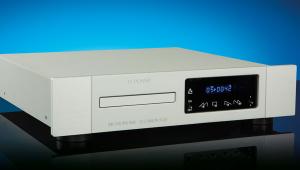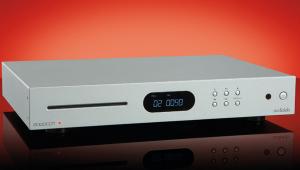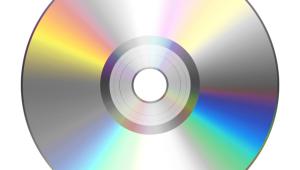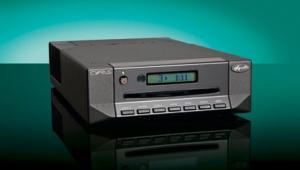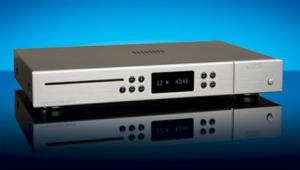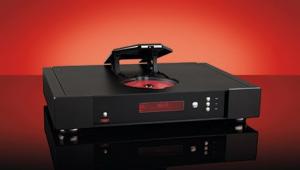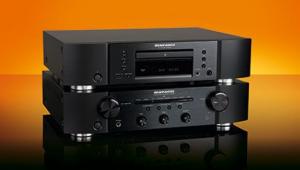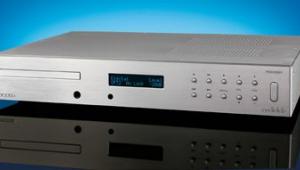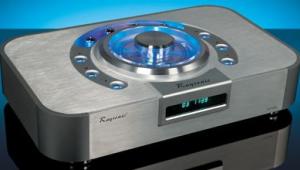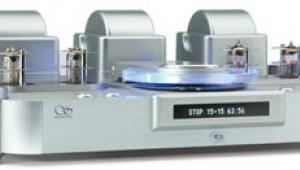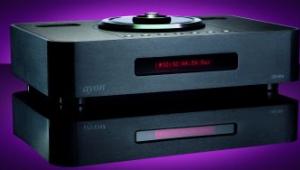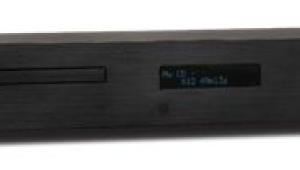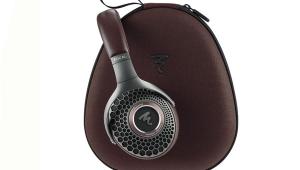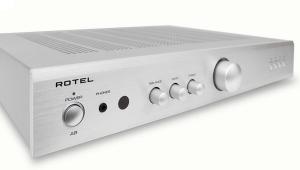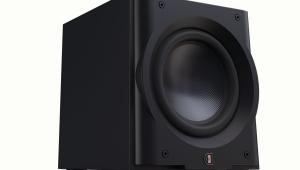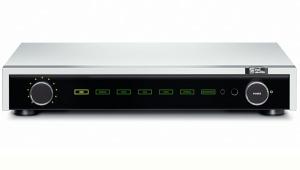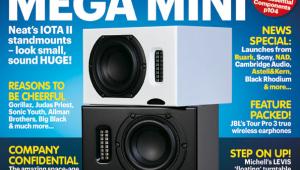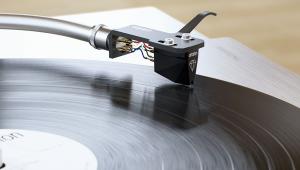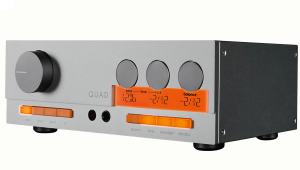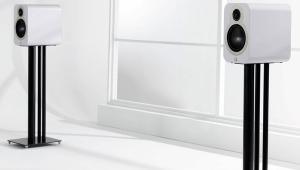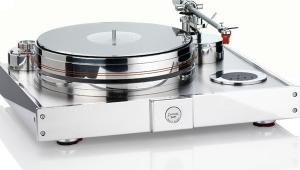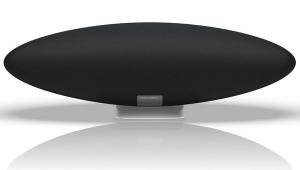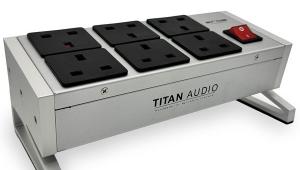Audiolab 8300CDQ
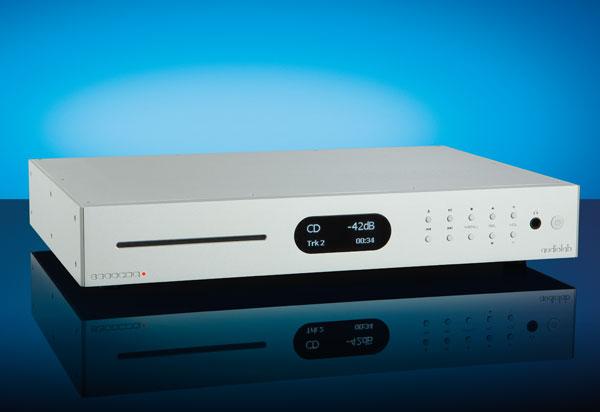
 It’s just short of a decade ago that I heard a working prototype of the original John Westlake-designed Audiolab 8200CDQ. I was quite taken by the technology inside, but most of all the fact it wasn’t just a CD player but a DAC and preamp too. This turned out to be the shape of things to come, as many rivals followed suit. Although just £100 more than its predecessor, the 8300CDQ is slicker and more sophisticated in terms of functionality, build and finish, and supports MQA.
It’s just short of a decade ago that I heard a working prototype of the original John Westlake-designed Audiolab 8200CDQ. I was quite taken by the technology inside, but most of all the fact it wasn’t just a CD player but a DAC and preamp too. This turned out to be the shape of things to come, as many rivals followed suit. Although just £100 more than its predecessor, the 8300CDQ is slicker and more sophisticated in terms of functionality, build and finish, and supports MQA.
In hi-fi circles MQA has become a bit of a Marmite codec, but whatever your viewpoint it helps to futureproof the player. Arguably of greater interest is the inclusion of DSD playback, which is creeping into wider audiophile use. The 8300CDQ offers 32-bit/384kHz PCM and DSD256 playback.
Moving to more prosaic matters, it also spins compact discs and has the latest slot-loading mechanism. Although not silent, the player is surprisingly quiet and smooth as it loads discs. It gives quick track access, claims to read poor disc surfaces better than others and there’s a digital buffer to make playback more seamless.
One of the most impressive things about the old 8200CDQ was its use of the then cutting-edge 32-bit ESS Sabre DAC chip. The 8300CDQ sports the latest versions, along with circuitry tailored to reduce distortion as much as possible. As before there’s a choice of digital filters to fine-tune the sound, including Optimal Spectrum, Optimal Transient, Optimal Transient XD, Optimal Transient DD, Sharp Roll Off, Slow Roll Off and Minimum Phase. To this four extra DSD filters are now present, progressively attenuating the out-of-audio band noise floor.
Round the back there’s a choice of RCA or balanced XLR analogue outputs, two Toslink optical and two coaxial digital inputs plus one USB-B, a optical and coaxial digital output and three pairs of analogue RCA inputs.
Sound quality
Using the Audiolab is simplicity itself, aided by the supplied remote control should you so wish. Listening is done via the CD drive, the USB input for all hi-res files – using a MacBook Pro running the latest Audirvana Plus 3, which has MQA playback and Tidal Masters streaming – and via the coaxial and optical digital inputs from a Blu-ray player.
There’s no mistaking an Audiolab. Some people call it dry, others will say it is accurate and uncoloured. Ultimately it’s a matter of taste. Steely Dan’s CD remaster of Aja sounds lighter and crisper than it could be – there’s a lot of atmosphere and detail, but instruments lack a little body and vocals a touch of warmth. Move to some retro electro like Nu Era’s Oscar Styles, and it seems to work better; the Audiolab extracting vast amounts of detail from the mix with seemingly brilliant forensic ability – its slightly analytical nature being turned to the advantage of the music, not to its detriment.
Indeed, its detail retrieval is something that repeatedly impresses. Working as a DAC, it gets closer than you’d think to the more costly Chord Electronics Hugo 2 (HFC 428) in some respects. It’s really good at eking out subtle elements of the mix; a hi-res PCM file of The Age Of Plastic by The Buggles via the USB input shows a really intricate portrayal of all the studio effects, and the ability to hear different strands of the music play along separately from one another is an expected pleasure for a machine at the price. Given a really good source file there’s a serious amount of insight; Alex De Grassi’s The Water Garden on DSD is spectacularly open and revealing. Admittedly it’s a superb recording and everyone’s favourite hi-fi demo track, but the way the 8300CDQ handles it demonstrates that it’s a lot of DAC for the money.
Soundstaging is pretty special, too. The aforementioned Chord Hugo 2 will do better, but the Audiolab can certainly go wide left-to-right. Scritti Politti’s Perfect Way via the CD transport shows how this machine can carry ‘hard pans’ from one side of the soundstage to the other very well indeed. It has a seriously spacious, large-scale sound. The great thing is that all of that detail resolution then takes over and fills in the gaps, which makes a panoramic listening experience full of stuff going on. Feed the player a really good hi-res file like Kate Bush’s Snowflake and suddenly the room is taken over by the breadth of the recorded acoustic.
Rhythmically it is an able performer. It has a good deal of get up and go, that makes songs such as The Box Tops’ The Letter great fun. This is a late-sixties pop number that’s very jaunty and the CD transport gets the best out of my old silver-disc reissue as the 8300CDQ knuckles down to its job and allows the music to naturally flow out. It sounds controlled, tidy and ordered – and often this is very impressive indeed. It’s only with more subtle, non beat-driven music that you remember this is a modestly priced player. Ralph Vaughan Williams’ Symphony No.2 (London Philharmonic, Bernard Haitink) is a lovely listen, especially with its vast orchestral soundstage – yet it doesn’t quite flow as organically as some pricier rivals. You can’t have everything, I suppose.
Running through the gamut of its inputs, I realise the 8300CDQ is very hard to beat as an all-round mid-price player. Especially when working as a DAC, its standout traits are the clean and balanced tonality, fine detail retrieval, wide soundstaging, decent rhythmic snap and even-handed nature. Whatever digital format or codec you choose, it’s quite special to listen to and the CD transport is really very good. The analogue line inputs turn in a clean and unsullied sound that’s only just a little thinner and more two dimensional than a serious purpose-designed preamplifier.
Conclusion
The arrival of Audiolab’s 8300CDQ is likely to cause much grinding of teeth among its price rivals. It takes the recipe of the original 8200CDQ, polishes it and adds useful functionality that will stand it in good stead for many years to come. DP
DETAILS
Product: Audiolab 8300CDQ
Price: £1,099
Origin: UK/China
Type: CD player/DAC/preamp
Weight: 6kg
Dimensions: (WxHxD) 444 x 80 x 317mm
FEATURES
● Slot-loading CD mechanism
● 32-bit/384kHz and DSD256-capable DAC with MQA support
● Digital inputs: 2x optical; 2x coaxial; 1x USB-B
● Analogue inputs: 3x RCA
● Digital outputs: 1x optical; 1x coaxial
 |
Inside this month's issue:
Ruark R610 music system and Sabre-R standmount speakers, PMC twenty.23i Active, floorstanders, English Acoustics Downton preamplifier, Bluesound NODE ICON preamp/streamer, Ortofon Concorde Music Blue MM cartridge and much, much more
|
